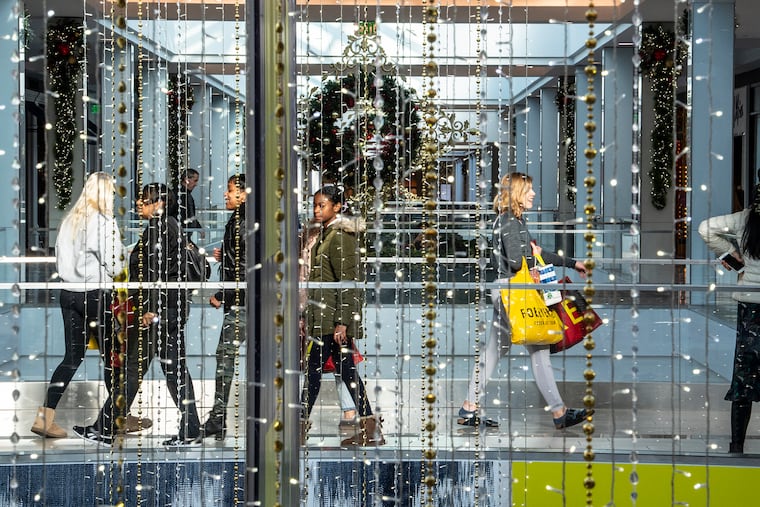Worthless holiday shopping hype never dies
Let’s get this out of the way upfront: Retail sales were not up 16% during the holiday weekend. Nor were they up 14% on Nov. 29, Black Friday.

Let’s get this out of the way upfront: Retail sales were not up 16% during the holiday weekend. Nor were they up 14% on Nov. 29, Black Friday.
That we even have to state this tells us a lot about how easy it is to fool people into believing things that are not true. It is also revealing about the state of economics reporting, the effectiveness of fake news and the sheer gullibility of too many journalists. Investors who buy into this nonsense should expect to suffer the financial consequences of their folly.
A quick review: For at least the past 15 years, the National Retail Federation has been misleading America with a series of reports on holiday shopping. Your humble Grinch takes it upon himself to point out this annual exercise in erroneous claims. These include the group’s forecasts for holiday sales, as well as several updates between Halloween and year-end. The various surveys are presented as factual sales data when they are anything but.
Consider for example the NRF’s latest holiday weekend retail sales report released yesterday:
Shoppers spent an average $361.90 on holiday items over the five-day period, up 16 percent from $313.29 during the same period last year. Of the total, $257.33 (71 percent) was specifically spent on gifts. The biggest spenders were 25- to 34-year-olds at $440.46, closely followed by those 35-44 at $439.72.
What’s wrong with those numbers? They are based on sentiment surveys, not real spending. The NRF conducted its Annual Thanksgiving Weekend Consumer Survey by asking 6,746 adult consumers how much they expected to spend. It then presents this as if its actual money that consumers parted with. I guess the NRF uses cents in those estimates to indicate it has a sense of humor; the margin of error of “plus or minus 1.2 percentage points” is similarly laughable.
Here are the facts: Because the advance monthly retail report for November won’t be released until Dec. 13, we have no idea yet how much shoppers spent during the latest holiday weekend. Since the NRF is likely to issue more Panglossian reports between now and the end of the month, keep in mind that the December retail sales data won’t come out until Jan 16.
I would bet my house that we didn’t have a 16% year-over-year sales gain this past weekend. I don’t do forecasts, but with inflation running at less than 2%, economic growth running at just a hair above 2% and employment slowing, I wouldn’t be surprised if we have real sales gains of between 1% and 2%. Then again, I don’t run a trade organization designed to promote and hype the retailing industry, a sector that has been under immense pressure during the past decade. It’s not called the retail apocalypse for nothing.
It is not just NRF sales reports that are suspect, but its holiday shopping forecasts as well: An earlier NRF survey of shoppers suggested retail sales for the period would rise “between 3.8 percent and 4.2 percent over 2018 for a total of between $727.9 billion and $730.7 billion.”
But this too is simply a guess. Asking people how much they spent last year (who can remember?) and how much they intend to spend this year (who really knows in advance?) gives you very little insight into their actual spending. Indeed, based on the track record of this methodology, the odds greatly favor this forecast being wrong.
Note that this design flaw is intentional. The trade organization has no interest in being accurate; instead, its goal is to promote a sense of excitement to the benefit of the shopping malls and retailers who are members of the NRF. Hence, the survey’s bias is to be unidirectionally inaccurate — that is, overly optimistic. (There was one exception: 2009, after the financial crisis, when the surveys revealed that people were scared — but not as scared as they said they were, so the survey was way too pessimistic.)
Normally, a trade organization hyping the interests of its members is unremarkable. What makes the annual forecasts relatively unique is the way the financial news media blithely parrots the useless information the NRF peddles. Outlets that should know better are guilty as charged.
There is a broader discussion to be had about why we are so easily fooled into believing things that are patently untrue, in this case a report that we know is deeply flawed and unreliable. Yes, it’s bad math, biased science and whatever else you want to call it. But it points to deeper issues that affect all of us, whether we’re investors, consumers or voters. Simply put: Why are we so enamored of, and swayed by, junk content?
It’s a complicated question. Motivated reasoning is a key for those who produce dubious information; for consumers of junk content, a combination of wishful thinking and confirmation bias explains a lot. A longer answer would be the stuff of a doctoral thesis.
The bottom line remains: When we cling to hype instead of data, we invite investing — and policy — foolishness at best, disaster at worst.